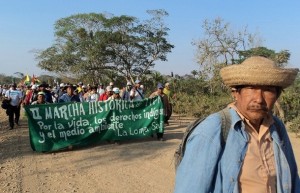Bolivian President and Indigenous Groups Make Headway in the Debate on the Amazon Highway Project

On August 26, dialogue between the Bolivian government and indigenous groups was initiated following almost two weeks of protests over a government-proposed plan to construct a highway through an environmentally protected area. As COHA Research Fellow Christina Curtin reported, opposition took the form of a 375-mile march to La Paz, which began August 15, as an act of opposition to President Evo Morales’ proposal to build a four-lane road through Isiboro-Sécure Indigenous Territory and National Park (TIPNIS). TIPNIS is an autonomous and environmentally protected area that is home to a number of indigenous populations. The road is meant to facilitate travel between the Cochabamba and Amazonian Beni regions, two areas that are vital to Bolivia’s economy. However, the indigenous groups believe that the convenience and new commerce the highway would open up the country to would not outweigh the amount of environmental destruction that would be threatened by its creation. Indeed, the director of the National Protected Areas Service (SERNAP) Adrián Nogales, claims that the road will constitute “the greatest ecological destruction in Bolivia’s history.” President Morales’ administration has agreed to set up six rounds of negotiations that would serve as a forum for representatives of various indigenous communities that would be able to voice their concerns about the implications of the highway. Since the government has reacted to protests against the project with little more than harsh, combative rhetoric, establishing a formal venue for open communication would not only help to heal its impaired relationship with the indigenous population, but it would also uphold Bolivia’s newly modified constitution (2009) that was created with the intent to increase indigenous groups’ influence in the country’s affairs.

